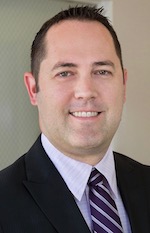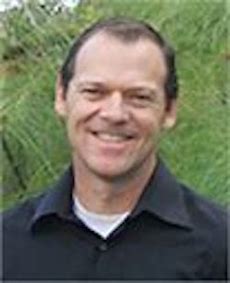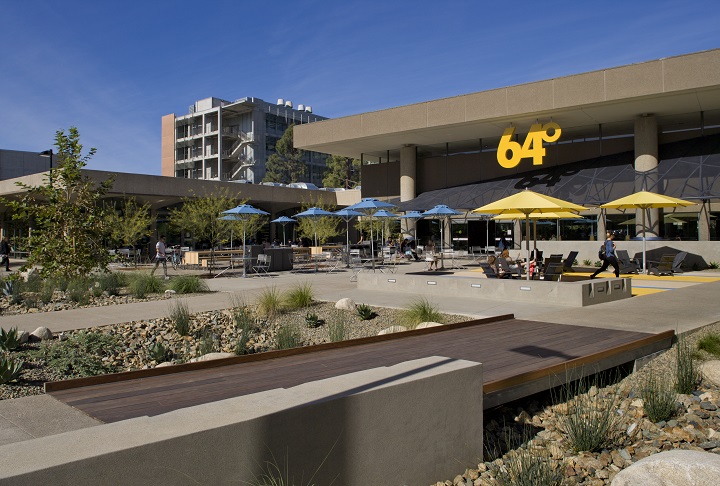Daily Business Report-Nov. 19, 2018
Rendering of the 14-story mixed-use development planned by Chelsea Investment Corp. and Father Joe’s Villages. (Credit: Joseph Wong Design Associates)
Chelsea Investment Corp. joins with
Father Joe’s Villages to build Downtown
high-rise for low-income families
Chelsea Investment Corporation and Father Joe’s Villages announced plans to build affordable housing for low- to moderate-income families, including people who have experienced homelessness or are at risk for homelessness, at 13th Street and Broadway in San Diego. In addition to creating much-needed affordable housing for the region, the mixed-use property will bring the neighborhood a new Head Start center.
The site, which the city of San Diego had already set aside for affordable housing, is a short walk from the City College trolley station. Architect Joseph Wong Design Associates designed the new mixed-use property, with construction expected to begin in mid-2020 and to complete as early as mid-2022. A long-awaited new fire station will also be built adjacent to the housing property.
The residential section of the property will be a 14-story high-rise providing a total of 273 apartments, comprised of 49 one- and two-bedroom units and 224 studio units to include three manager units. Tenants will have access to new underground parking and will enjoy outdoor recreation spaces including picnic and barbecue areas and a rooftop deck with greenery.
Father Joe’s Villages will coordinate supportive services for residents such as medical care, vocational training and counseling. On the ground floor, Head Start will operate a 3,000 square-foot center managed by the Neighborhood House Association to provide free, comprehensive early childhood education and health services to low-income children from birth to the age of 5.
Father Joe’s Villages plans to add more than 2,000 units of affordable housing to the San Diego region over the next several years. The organization’s Turning the Key initiative incorporates sites throughout San Diego, with the majority (approximately two-thirds) of the units outside of Downtown. The nonprofit organization expects to begin renovation on converted motels in 2019, and will be breaking ground on new affordable housing at 14th and Commercial in the same year.
Scripps reports opioid prescription
sizes fall by 25 percent
Scripps Health has achieved a 25 percent reduction in the average number of tablets per opioid prescription ordered for patients at its hospitals and outpatient centers across San Diego County during the first year of its Opioid Stewardship Program (OSP). Scripps created its OSP last year with the goals of reducing prescription opioid usage, preventing opioid addiction and taking advantage of other pain management options before considering opioids.
“We want to return our patients to healthy function as soon as possible, without putting them at risk for opioid dependency or the side effects of opioid usage,” said Ole Snyder, M.D., a Scripps-affiliated family medicine physician and chairman of Scripps’ OSP. “We’ve designed a multifaceted approach to achieve these goals, which includes educating patients and doctors, and implementing consistent prescribing and tapering standards.”
The United States is in the midst of an opioid epidemic, fueled in part by prescription opioids. According to the Centers for Disease Control and Prevention, more than 40 percent of all opioid overdose deaths in the U.S. in 2016 involved a prescription opioid. The number of overdose deaths involving prescription opioids has grown fivefold from 1999 to 2016.

AMN Healthcare volunteers return from
medical development mission to Guatemala
AMN Healthcare just returned from their sixth annual Guatemala Mission where Sophie, just shy of a year old and born with a double cleft lip, a cleft palate, and congenital eye malformation, received surgery to repair her double cleft lip and prepared the left upper and lower eyelids for a future prosthetic eye.
When Sophie and her parents reunited, there was not a dry eye in the hospital. “You have given us the hope our family needs” said the parents of Sophie. So far, the six AMN Healthcare missions to Guatemala have directly helped more than 18,000 indigenous people.
The medical mission is led by a core group of volunteer physicians, nurses and technicians sponsored by AMN. Team Hope performs more than a hundred surgeries and 1,000 clinic visits a year.
With the help of Guatemalan workers, AMN volunteers also refurbished the El Molino School, including new classrooms, bathrooms and a kitchen, and reroofed the building.
San Diego County jobless rate
increases to 3.3 percent in October
The unemployment rate in San Diego County was 3.3 percent in October, up from a revised 3.2 percent in September, and below the year-ago estimate of 3.6 percent, the state Employment Development Department reported. This compares with an unadjusted unemployment rate of 4 percent for California and 3.5 percent for the nation during the same period.
Between September and October, total nonfarm employment increased from 1,481,400 to 1,492,100, a gain of 10,700 jobs. Agricultural employment decreased by 300, from 9,200 to 8,900 jobs.
• Government recorded the largest growth in employment, adding 7,200 jobs. State government increased by 3,700 jobs with all the gain in state government education. Local government gained 3,500 jobs and federal government remained unchanged.
• Employment also increased in professional and business services (up 3,000). More than 80 percent of the gain occurred in professional, scientific and technical services (up 2,500). Manufacturing and educational and health services added 1,100 jobs each. Trade, transportation and utilities, financial activities and other services also added jobs over the month.
• Employment decreased the most in construction, losing 1,900 jobs. Leisure and hospitality and information also saw payroll decreases, while mining and logging reported no change.
Between October 2017 and October 2018, total nonfarm employment grew by 26,000 jobs or 1.8 percent. Agricultural employment increased by 100 jobs.
• The largest employment gain over the year occurred in professional and business services, posting an increase of 16,400 jobs. Sixty percent of the increase was reported in professional, scientific and technical services (up 9,700).
• Other industry sectors recording year-over gains included manufacturing (up 5,600), educational and health services (up 4,600), government (up 3,500) and other services (up 2,900).
• Leisure and hospitality reported the largest decline in employment over the year, decreasing by 4,000 jobs. A loss of 5,200 jobs in accommodation and food services was offset by a gain of 1,200 jobs in arts, entertainment and recreation.

Borrego Springs to celebrate opening
of new library, park and Sheriff’s office
Borrego Springs will soon celebrate the grand opening of a new county library, park and Sheriff’s office. Construction workers are putting the finishing touches on the buildings and park so that all three will be ready for their formal debut on Dec. 8.
The small desert community has watched the 16-acre project come to life since construction began in October 2017. The grand opening takes place from noon to 3 p.m. at 2850 County Club Road. The public is invited to attend.
The new library is the larger of the two buildings on site. It sits on 2.6 acres and offers 14,000 square feet of space, more than three times the size of the current branch. The library will have a large children’s area, a space for tweens and teens, a technology center with a 3D printer, a conference room, more than 2,200 square feet of community meeting space, and a Friends of the Library Book Nook and Conversation Café.
Once solar panels are installed on the parking lot shade canopies in February, the branch will be the county’s third zero-net-energy facility. That means all the energy needed to run the building will be produced onsite.
The new park is adjacent to the library, and visitors will find shaded playgrounds, a full basketball court, a tennis/pickleball court, a volleyball court and a dedicated space for bocce ball. Residents can also get a workout on the outdoor fitness stations or take advantage of a meditation area.
A 100-seat amphitheater will accommodate any number of events. The park also features natural vegetation, and shaded benches and picnic areas dot spaces along the park’s trails. Dog lovers will appreciate the off-leash dog park.
The new Sheriff’s office shares the same property as the library and park. The state-of-the-art building measures 1,600 square feet and replaces an old facility across the street that used to be a bank. The expanded space will accommodate Sheriff’s deputies and members of the Sheriff’s Senior Volunteer Patrol as they serve the communities of Borrego Springs and Ocotillo Wells.
Airspace Technologies to triple
headcount following $20M investment
Carlsbad-based software startup Airspace Technologies helps facilitate the shipping of time sensitive items, such as human organs. Following a $20 million investment from venture capitalists in Silicon Valley and San Diego, the company plans to hire 120 people.
Personnel Announcements
Daniel Brast joins Balestreri Potocki & Holmes

Attorney Daniel J. Brast has joined the the law firm of Balestreri Potocki & Holmes.
Brast has over nine years of experience representing real estate developers and general contractors in complex construction-related disputes. In addition, he has extensive experience dealing with insurance issues related to construction and real estate development. Brast has represented developers and builders in all shapes and sizes, from local shops to national corporations.
Brast previously was staff counsel for a multinational insurance company representing its insureds in complex construction-related claims.
Balestreri Potocki & Holmes provides representation to a diverse range of business clients with an emphasis in the legal advocacy and consultation of business owners and companies working in or related to the construction, transportation and hospitality industries.
Bret Schanzenbach named CEO
of Carlsbad Chamber of Commerce

Carlsbad Chamber of Commerce announced the selection of Bret Schanzenbach as its new CEO. Schanzenbach will succeed Ted Owen, who is retiring in January 2019 after 15 years at the chamber.
Schanzenbach, a native California and resident of North County since 1971, comes to the Carlsbad position from the Vista Chamber of Commerce where he served as CEO since 2009. His corporate background before the chamber was in residential real estate and the software industry. In 1992 he helped start Technical Difference Inc., a human resources software company in Bonsall, Calif. Before venturing into the corporate world, Schanzenbach spent seven years as a youth minister.
“I am excited to continue the great work that has been done in and through the Carlsbad Chamber of Commerce over the past decades,” said Schanzenbach. “Carlsbad’s robust business park and thriving tourism industry make it ideally situated to be an economic anchor and catalyst for all of North San Diego County.”
Schanzenbach graduated from the Franciscan University of Steubenville in Steubenville, Ohio, earning a bachelor’s degree in psycology. He earned his master’s degree in theological studies from the University of Dallas.
___________________________

A landslide, supermajorities and now a fat budget surplus:
It’s good to be Gavin right now
By Dan Morain | CALmatters
The good news just keeps coming for California Gov.-elect Gavin Newsom.
Not only did he win a resounding 60 percent-plus landslide, but he will be greeted by a two-thirds supermajority of fellow Democrats in both houses—more than sufficient to approve a tax increase. Not that he’ll need it any time soon.
That’s because he’ll also inherit a $200-billion plus budget that, as it turns out, is in “remarkably good shape” heading into the coming year, with nearly $30 billion in combined reserves and unexpected tax revenue, the Legislative Analyst’s Office reported.
“By historical standards, this surplus is extraordinary,” the analyst wrote in its annual fiscal outlook for the 2019-20 budget year.
So is Newsom’s luck, says Hoover Institution research fellow Bill Whalen, who worked in Gov. Pete Wilson’s administration. “This,” Whalen said, “is living under a fortunate star.”
One reason for the analyst’s projected surplus is that spending increases will be “very low” for a variety of reasons, not the least of which is that under Gov. Jerry Brown, lawmakers have sought to limit increases in ongoing spending.
Eight years ago, when Brown was governor-elect, California was mired in a recession. The state faced a $27 billion budget deficit. Some experts doubted that California could remain solvent.
In its fiscal outlook in November 2010, the LAO issued offered the stark choice: “Address today’s huge, frustrating budget problems now or defer the state’s budgetary and policy problems to future Californians.”
Brown responded in 2011 by asking the Legislature to approve a sales and income tax increases. Republicans, who still had clout then, blocked his appeal.
Brown then turned to voters who answered by approving a ballot measure raising taxes in 2012. Voters extended that higher income tax rate by initiative again in 2016. By the time Newsom completes his first year in office, revenue from personal income taxes in California will have increased by 46 percent since 2012-13.
Income tax revenue, much of it paid by people earning $1 million or more, will account for $101 billion in the coming year, or 71 percent of the revenue that flows into the general fund. The general fund pays for the state’s share of most programs, including schools, universities, health care and prisons.
While revenue rises, California’s spending is leveling off for a variety of reasons:
Public schools, which are the biggest draw on the state budget, are experiencing declining enrollment as California’s fertility rate continues to fall.
Property taxes—the local government’s share of school funding—will generate $25.3 billion. Eight years ago, property tax revenue accounted for $13.2 billion.
Health care spending will rise less quickly, about 4 percent in the coming year. That’s significantly less than the 9 percent increase from the prior year.
The analyst notes that spending on Medi-Cal, the main health care program for poor people, is increasing less rapidly in part because California under Brown has succeeded in enrolling about as many people as are eligible.
“I’ll give you the asterisk now,” said Ann Hollingshead, senior fiscal and policy analyst for the LAO who along with Deputy Legislative Analyst Carolyn Chu provided CALmatters with the budget briefing. The surplus includes $14.5 billion that by law must stay in the reserve, plus $14.8 billion in a one-time revenue surge.
That’s the largest projected surplus ever in California. But as a percentage of the budget, it’s second to the projected surplus in 2000. That year, the Legislative Analyst anticipated $10 billion in extra state money. Then the dot-com bust hit. The supposed surplus transformed into a $12 billion deficit.
“We tell that story as a cautionary tale,” Hollingshead said. In other words, the LAO suggests, Newsom and his supermajority would be wise to sock away the vast majority of the $30 billion windfall for the recession that at some point surely will hit.
Whalen echoes that caution, noting that the Legislature will likely besiege Newsom with spending requests, which he should resist, if only to manage expectations—which will be formidable, given the hand that Newsom wields now. His advice? A fiscal showdown.
“When Jerry Brown came in in 2011 he did a very good job of setting the tone and tenor for the Legislature (by) vetoing the budget,” Whalen said.
“That was a very effective way of saying: You will not push me around.”
Laurel Rosenhall contributed to this report.



